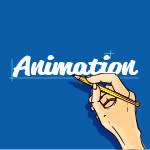‘Frozen 2’: How Disney Swooped ‘Into the Unknown’ With New Tech and Social Engineering

Click here to read the full article.
With “Frozen 2,” Disney got more ambitious with its sequel, exploring the royal family backstory of Anna (Kristen Bell) and Elsa (Idina Menzel) while explaining Elsa’s mysterious magical ice power. There’s a colorful enchanted forest with earth, wind, water, and fire spirits, along with the monochromatic danger of the Dark Sea and what lies beyond. And it plays out as a contrast between the idealistic fairy tale qualities of Anna and the weightier mythological aspects of Elsa. This pushed Disney to embrace more of a social engineering approach to animation, with closer collaboration between departments, and also required the creation of a pivotal new tool.
The first challenge was the early musical “Into the Unknown” sequence (with music and lyrics by “Frozen” Oscar winners Kristen-Anderson-Lopez and Robert Lopez), in which Elsa runs out of the castle, led on a new journey by the musical voice in her head (singer Aurora). She witnesses snowy characters from the past and future, which foreshadows a great battle. “The idea of Elsa laying down this blank canvas of her magic with snow particles kept coming up again and again,” said Steve Goldberg, the visual effects supervisor.
More from IndieWire
Pixar on Life After John Lasseter: 'The Company's Quite a Bit Different Now'
Disney Boss: 'Of Course' We're 'Disappointed' by Fox Box Office So Far
“We wanted to really make clear to the audience that it was a different force that was taking her magic and that it was not under her control. As we went through the pipeline, effects would need to lead certain things and I was pushing really hard to make sure that animation was leading [here]. And that it was about Elsa’s reaction to what was happening that would sell that idea through her performance.
“As she gets further in and the forest is growing up around her,” added Goldberg, “and the reindeer and two children run by, all made out of the snow particles, animation would continue to drive. So I would be doing orchestration in terms of making sure that the right departments were hitting at the right times. And it really had to do with figuring out who was driving each shot and the magic on display.”
However, the greatest challenge on “Frozen 2” involved the making of the wind spirit, Gale, a combination of character and effects animation, which necessitated the creation of a new tool called Swoop. “We had to have four and sometimes five departments working in close collaboration, animating wind as a character,” Goldberg said. “It’s what I call social engineering. What do we see during layout? What is animation animating? The end result is leaves and particles, but there was a realization early on during testing that the effect of the animation on clothing and hair was as important or more important than the particles in the air.”
With Swoop, the Gale rig (a series of curves) could be attached to a controllable path by the animators with real time feedback. “This provided an approximation of how large the wind gust was going to be and the timing [as] it followed a path,” said Goldberg. “We could not only adjust the three-dimensional path but also the timing that an object [or character] would follow as it went along that path. This had to be a character, sometimes dangerous, sometimes playful, and it had to allow the animator to be as expressive as possible.”
The other difficult character to animate was Nokk, based on Norwegian mythology of a water spirit that takes the form of a horse. Elsa initially must fight and tame Nokk in the Dark Sea before completing her mythic journey to understand and harness the full potential of her icy power. “It was straightforward in layout and animation using a model of a horse,” Goldberg said. “Where it got tricky and fascinating was getting into the mane and the tail and being able to control those. There were early tests where we had too much water coming off of the mane and the tail like a fire hydrant. “So we slowly came down from that, with the art department and tech animation coming up with different ways to control the mane and tail like like a gentle waterfall.”
When Nokk runs across the water and fights with Elsa, animation desired more of a wind-blown, particle-infused characteristic. And that was difficult to evaluate until lighting became involved. “We got into a large, iterative loop,” added Goldberg. “Lighting brought balance and volume inside the horse with a glow that helped with the reading of the character. So our technical animation and lighting were every bit as instrumental as the effects for the Nokk.”
Best of IndieWire
Golden Globe Predictions 2020: Power Ranking This Year's Most Likely Nominees
Golden Globes 2020 Predictions: Best Supporting Actor in a Series, Limited Series, or TV Movie
Golden Globes 2020 Predictions: Best Supporting Actress in a Series, Limited Series, or TV Movie
Sign up for Indiewire's Newsletter. For the latest news, follow us on Facebook, Twitter, and Instagram.


